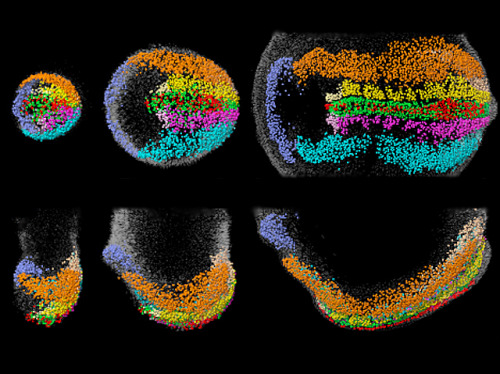
Time Machine Learning
The earliest stages of life are delicate, challenging scientists to come up with new ways observe without disturbing. Here they’ve turned to a form of time travel. Seen from above (top row) or the side (bottom), gentle light sheet microscopy captures individual cells (grey) in a mouse embryo as they grow and develop. Eventually the cells separate into stripes (right) destined to form different tissues. Following these developments backwards in time, (from right to left), a form of machine learning uses multi-coloured blobs to trace each cell’s ancestry, highlighting, for example, that the green-coloured cells on the left share the same lineage as the green cells in the early brain – the neural tube – on the right. Understanding the timings of this separation into layers of cells – a process called gastrulation – will help to improve the picture of early development as well as problems that may lead to miscarriage.
Written by John Ankers
- Image from work by Katie McDole and colleagues
- Janelia Research Campus, Howard Hughes Medical Institute, Ashburn, VA, USA
- Image copyright Elsevier 2018. Reproduced with permission.
- Published in Cell, October 2018
You can also follow BPoD on Instagram, Twitter and Facebook
Archive link






Комментариев нет:
Отправить комментарий